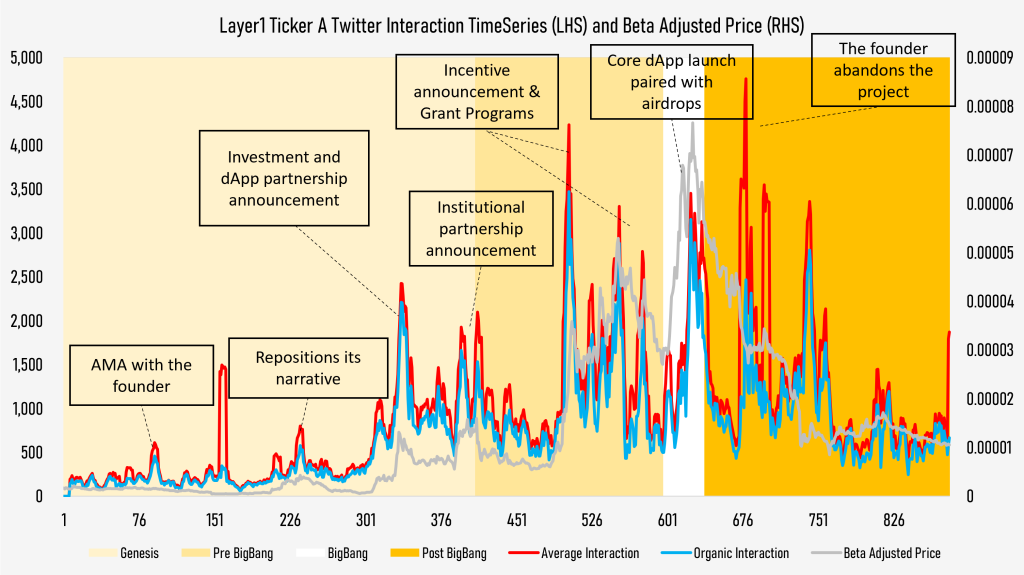The Hitchhiker's Guide to the Web3 Marketing - Part 2 of 2
Table of Contents
Part 1
Part 2
Important Disclaimer
This content is provided for informational and educational purposes only, and should not be relied upon as legal, business, investment, or tax advice. Furthermore, references to any securities or digital assets are for illustrative purposes only and do not constitute an investment recommendation or offer to provide investment advisory services. Factomind cannot be responsible for your use of the information provided in this content. Factomind has established, maintained, and enforced strict internal policies and procedures designed to identify and effectively manage conflicts of interest related to its business activities. Factomind does not own any digital assets mentioned below, nor has it made any purchases or sales of the digital assets mentioned below. All materials in this research paper are sourced from publicly available information.
Some information has been censored in this paper due to possible conflicts of interest. If you require access to the full version, please contact us via e-mail.
4. The Hitchhiker’s Guide to Web 3 Marketing
4.1. Phase 1 : Genesis

“The Answer to the Great Question of Airdrops, Giveaways, and Raffles… Is… [ ],” said 0x88e4ad688459c9755040c4af1d0a529a, with infinite majesty and calm.
As aforementioned, the main objective in this phase is:
- – To build trust in many and unspecified persons that your project is legitimate. Legitimacy in this sense not only means that (of course) your project is not a scam, but means your project has a strong moat in the sector, and your team has enough resources to deliver what is promised.
- – The main KPI for this phase should be 300 organic interactions* per Tweet, and 1000 organic interactions for core Tweets, as defined by common traits found in successful projects.
4.1.1. To Appeal Legitimacy : Press Releases, Team Profiles
To Make a Case
Cheat Sheet
4.1.2. To Build Community : Discord
To Make a Case
People come to your project for various reasons; they could be attracted by your legitimate team’s vision, or by early bird investment opportunities. Regardless of their intentions, you need a place to assemble those who once have shown interest in your project. Let Twitter be your rocket and let Discord be your space station.
As Twitter is mostly unidirectional, it will reach out to a broader audience, and Discord bidirectional, so those who are more interested will gravitate towards Discord.
Cheat Sheet
4.1.3. To Explain Your Project : Medium, Youtube, AMA
To Make a Case
Now you established your legitimacy and also set up a Discord channel for your frens. But yet, people still don’t know what you are doing. This is why you need Medium, Youtube, etc. or a more non-volatile media than Twitter.
Medium (or other blogs) articles are typically much more exhaustive and elaborate than Twitter threads, so it should help to enlighten those who are truly concerned about the fundamentals.
Youtube, or other video channels are useful as well. Somebody might think that, unless she is running a gaming-related project, visual materials are of low priority—but not rightfully so. Successful projects, regardless of them being Layer 1 or DeFi, use at least one of these video channels.
AMAs/Twitter Spaces are another venue to meet your raving fans in a bidirectional way apart from Discord; since they are sporadic events, they cannot replace Discord channels which are perpetually functioning, but participants could be more focused on AMAs/Twitter Spaces as they are scarce and much more accessible.
Cheat Sheet
- – 80/20 rule for Medium : Write 80% of Medium articles about the fundamentals of your project, and 20% about advertising events
- – DeFi : Educational materials on general DeFi, in-depth recorded answers to FAQs, how to safely use your protocols, how to interact with your protocols
- – Layer 1 : Weekly meetings, recorded interviews with core Dapp developers on your Layer 1, how-to-use Wallets
4.1.4. Other Minor Tricks
RTs and Mentions
To Make a Case
Cheat Sheet
*authentic : Tweeted by an official account
*quotative : RTs or mentions
Mentioning Project Tokens
To Make a Case
Cheat Sheet
Tweeting Span
4.1.5. A Travel Diary for Phase 1: No Hasty Airdrops
Always remember the Genesis phase is a phase in which you establish your legitimacy in the industry, so your focus should be on ‘legitimacy,’ not ‘scalability.’
Airdrops are not free. If you give people tokens to advertise your products, but if nobody understands or even knows about your project, then they will be highly tempted to market-sell all airdropped tokens and never again be involved with your project.
However, if you succeeded in indoctrinating customers with your project’s legitimacy, then some of them might still sell their airdrops, but a much larger proportion of airdrop recipients will still be engaged with your project—they have two options: One, to sell and to lock in small profits, and two, to dream big and to aim for a moonshot. A well indoctrinated audience tends to choose the latter. Hence, it is important to spend enough time to convey legitimacy.
Nonetheless, if somehow your project is already acknowledged by the audience, such as a new-language Layer 1 project engineered by former FAANG employees, then this ‘legitimacy propagation’ period could be meaningfully reduced.
4.1. Phase 1 : Genesis

And they said, “LET THERE BE AIRDROPS!”
And there were airdrops.
The Pre-Big Bang phase is a phase in which you promote hypes on your project, since people are already persuaded of your legitimacy in the previous phase. You must reach out to a much broader audience and aggressively scale your community in this phase.
In this phase, your main objective is to spread your project to as many people as possible.
- – Since now everybody (at least those who already joined your community) knows your project is legit, you must focus on scaling your existing community. Fundamentals are the powder and community is the fuse, so just add some friction.
- – Be a bit more active on your Twitter, and inject FOMO into all visitors.
- – The main KPI for this phase would be 900 organic interactions per Tweet, and 2200 organic interactions per core Tweet.
This phase is directly linked to the Big Bang event, which would be the one-time event that draws all market participants’ attention, and bridges your project to the mass adoption; so the primary purpose is to amplify expectations in the products, such as mainnet launches or IEOs.
Basically, in the Pre-Big Bang phase, you tell people: “Ye didn’t know about this project yet? You’re almost screwed. But now I tell ya. IYKYK.”
4.2.1. To Attract Customers : Airdrops, Giveaways, Raffles, etc.
To Make a Case
There are many words that refer to an act of offering tokens or NFTs to specified persons, but we will just group them into ‘airdrops’ in this paper.
There are many variations in designing airdrops, in terms of recipients, amount, and methods; in this paper, we will deal with the timing only.
Since you have been successfully building your community during the Genesis phase, you are now ready to airdrop some tokens. If you airdropped your tokens to 100 random users before you convinced them of your legitimacy, all 100 of them would outright sell the tokens, only to never come back. However now, although still a fair percentage of the recipients would sell tokens, a much greater portion of the recipients would remain as your community.
Cheat Sheet
Of course, if you managed to assure people of your legitimacy, you are free to execute an airdrop at any earlier time. Just remember, patience is the key.
Failed projects, on the other hand, all announce their airdrops at a much earlier stage than successful projects. For some failed projects, their second Tweet was already about them airdropping tokens in the subsequent week! It is difficult to influence people to be your fans with a single greeting Tweet: Easy come, easy go.
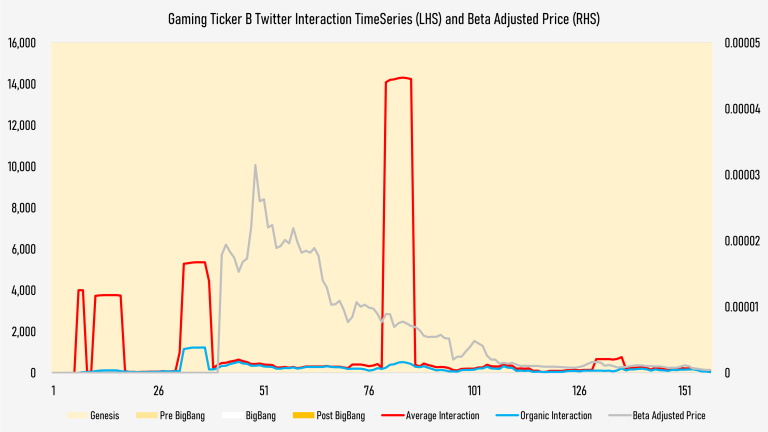
Figure 9 – A Time Series Data for Gaming Ticker B
4.2.2. To Explain Your Project : Medium, Youtube, AMA
To Make a Case
You have already spent many efforts in the Genesis phase on Medium articles and AMAs to explain your project to interested groups, and now it is time to lessen your burden. However still, there are always newcomers to your project, and rarely do they click on the past blog writings, so it is preferable to still operate Mediums and host AMAs, but with a less frequency.
Cheat Sheet
4.2.3. To Bring Up Hype : Product Shills
To Make a Case
In the Genesis phase, you Tweeted on your project in a serious manner, on the mechanics, on GTM strategies, and on the roadmaps.
In the Pre-Big Bang phase, you Tweet on your project about the exact time of your product. To cite poor example Tweets, your Tweets would transform from “our product works like this” to “our great product that works like this will be on air later this year!”
You need to constantly remind people of your Big Bang event date, what would happen on that day, and why they should be aware of the Big Bang, so that they mark their calendars, and clap for you when doomsday finally arrives.
Cheat Sheet
4.2.4. Other Minor Tricks
RTs and Mentions
Tweeting Span
4.2.5. A Travel Diary for Phase 2 : Scaling Your Community
The Pre-Big Bang is the phase in which you build hype around your Big Bang event, which includes mainnet launches, beta playtests, or sometimes even whitepaper releases.
Needless to say, the most important factor in your success is your project’s fundamentals. Hype is though not as important, but still is quite crucial for success.
Below is a project that had strong fundamentals, but was negligent on building community.
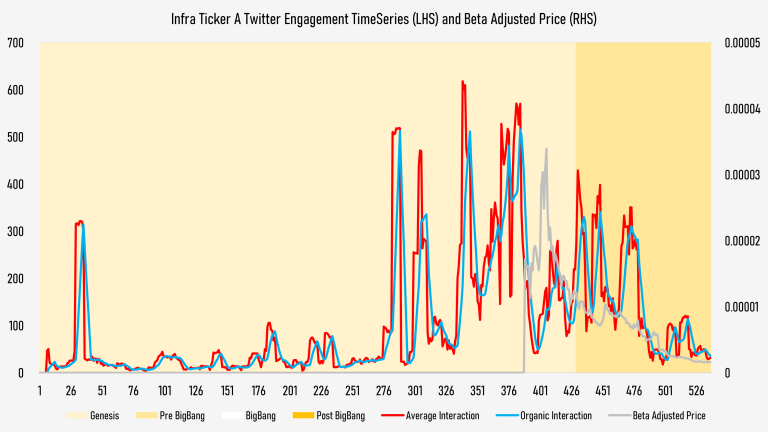
Figure 10 – A Time Series Interaction Data for Infra Ticker A
This is a very technology-intensive project that had been building throughout the whole previous bear cycle, that had delivered all their roadmaps on time with high qualities, and thus had a good potential to be a top contender in the sector (at least in our opinion).
Nonetheless, it did not take efforts to advertise its legitimacy (its first authentic legitimacy Tweet was posted after 786 days since inception!), nor to foment hype on their projects (an average of 76 days between authentic hype Tweets), so although its mainnet and token launch had a spike in interactions, it was all a storm in a teacup.
Now, of course, hype might be a necessary condition for success, but it is no way a sufficient condition. You can only go so far with hypes unbacked by fundamentals. This is common knowledge, so we do not propose any examples as we deem it to be redundant.
4.3. Phase 3 : Big Bang

The founders came out of the long tunnel into the Big Bang.
The Big Bang phase is defined as achievement of the core roadmap plan, which includes product launches, beta releases, or sometimes whitepaper releases, that transmutes the existing hype into feverish excitement—in other words, it is the first step towards the mass adoption of a product, and also an indication of a successful business.
In this phase, there are no explicit objectives, as it is a phase in which you observe the result of your previous actions in the Genesis phase and the Pre Big Bang phase.
Just to be sure, we would like to remind you readers that the essential ingredient for success is the fundamentals of the core product, and community marketing is only a subsidiary multiplicative factor to the core product.
For successful projects, their announcement Tweets on the Big Bang event were casually met with organic interactions of more than 3,000.
4.4. Phase 4 : Post Big Bang

Everyone has their own path. The choices they’ve made.
The Post Big Bang phase represents all time frames beyond the Big Bang. It is when after you succeed in mass adoption, you shift your efforts more towards building fundamentals, and less towards community and hype.
In this phase, you do not have to be scrupulous with your Tweets or timelines; you focus on rolling out your roadmap one by one, without fighting for the clock.
The Post Big Bang phase cannot be aggregated into a single pattern, but let us provide an exemplary case for a project that scored the Big Bang, yet lost market traction in the Post Big Bang phase.
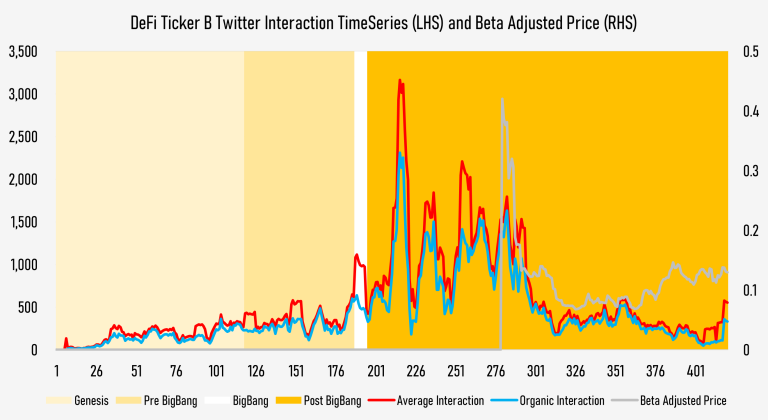
Figure 13 – A Time Series Interaction Data for DeFi Ticker B
As we abovestated, projects in the Post Big Bang phase all have products and community. Hence, the deciding factor for prosperity in this phase must be attributed to the fundamental moat of the projects.
In this case, DeFi Ticker B had a strong competitive moat, the first-of-its-kind status, and also implemented quite a few innovations along the course, and achieved the Big Bang within half a year from the inception. Nonetheless, the very business area of the protocol was heavily reliant on leveraging demands and speculative demands during the bull run, so its once great business model started to dwindle under the bearish circumstances. It still has its competitive moat within its sector (actually it is the only thriving protocol within its subsector), but its sector itself has waned, resulting in its fall.
The project proclaimed to drop its original narrative lately and pivoted to be a more boring, but much more sustainable one. Whether it could resurrect or not, we will see.
5. The Community is a Harsh Mistress
Good projects are all alike; every bad project is bad in its own way.
We have many failed projects in the Web 3 world. As we defined at the beginning, there are white dwarfs, who gained fame today but gone tomorrow; there are dark matters, which never came to the spotlight. For the latter, it is hard to investigate such cases thoroughly since they are never known to the public.
However, the white dwarfs could give us insightful observations on what not to do, as they at least passed the starting line of community attention (or they thought they did), but slipped later on.
From hereunder, we will delve in detail into projects that gained initial traction but failed to sustain it.
5.1. The Starship Droppers
Airdrops are not infinite nor gratuitous, so they must be spent correctly.
We are not biased against airdrops in any way nor do we believe that airdrops are the worst customary practice in existence and that it should be shunned by all founders. We wanted to put emphasis on the fact that ‘when you are airdropping, you are not actually dropping air; that air costs you (implicit) money.’
One of the worst airdrop strategies we found was pairing your first flight with airdrops. Below are two examples of Gaming projects that paired their Genesis phases with premature, significant airdrops.
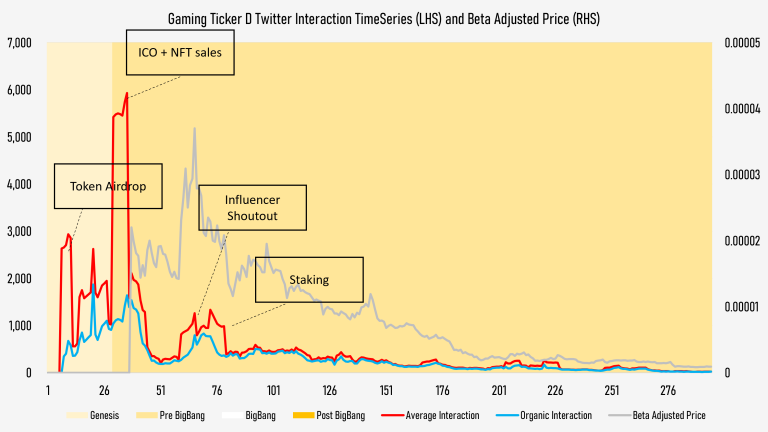
Figure 14 – A Time Series Interaction Data for Gaming Ticker D
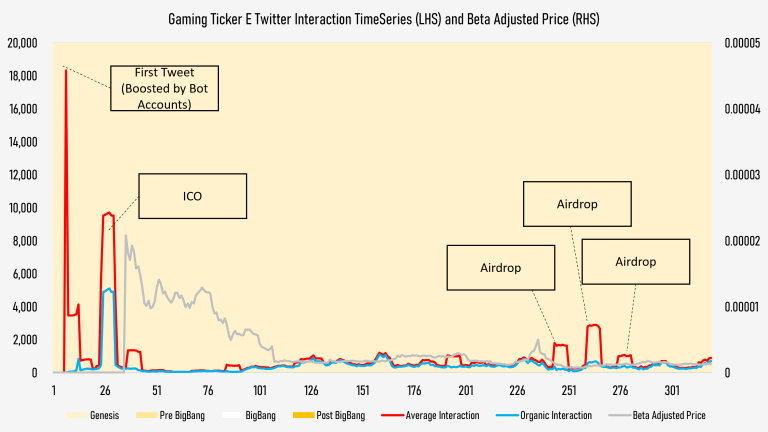
Figure 15 – A Time Series Interaction Data for Gaming Ticker E
As obviously visible from the time series data, both projects seem to have had great starts—having tens of thousands of engagements is not an easy feat, even if we adjust for bot activities.
But if we look a bit deeper, both projects began their crypto journeys with airdrop announcements right after their initial Tweets, directly followed by IGOs, without relaying any messages regarding their legitimacy in the field, which would in this case be the gameplay qualities.
Those crypto sharks preying on these airdrops and IGOs exclusively seek monetary benefits, not project roadmaps.
The consequences of incautious airdrops were dreadful, both in terms of price and attention. Had they been able to retain attention whilst prices dropped, the price drop would fall under the ‘marketing expenditure,’ but they had no community left even after they spent such money indirectly.
We want to highlight again: Airdrops are not free, and you must build legitimacy before you execute an airdrop.
5.2. I, Robot
Bots are, well, not bad, but instead simply ineffective. Hiring bots to boost your followership costs you some money, and earns you null. Above is a project that used bots to scale its presence on Twitter and failed.
Bots give you followers, likes, and retweets, but since nobody follows bots, these engagements do not echo as they simply do not show up on organic Tweeters’ timelines. The only possible positive effect is the naïve assumption that organic Tweeters would look at your bot-filled follower statistics, and believe that you are legitimate based on the numbers; which is not entirely baseless, but at the same time not fully grounded.
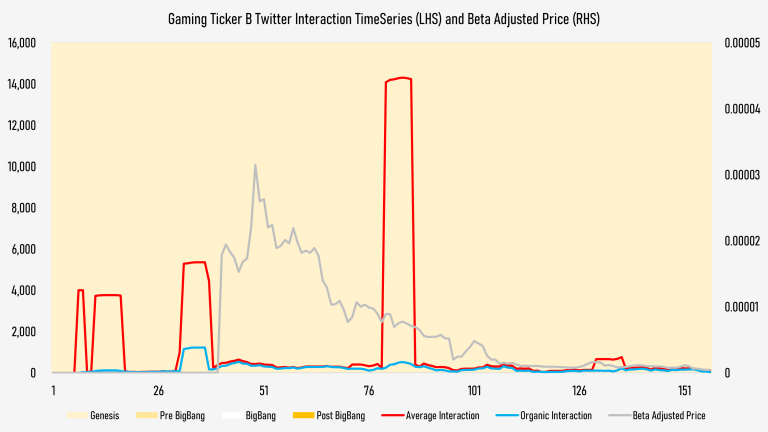
Figure 16 – A Time Series Interaction Data for Gaming Ticker B
5.3. The Childhood’s End
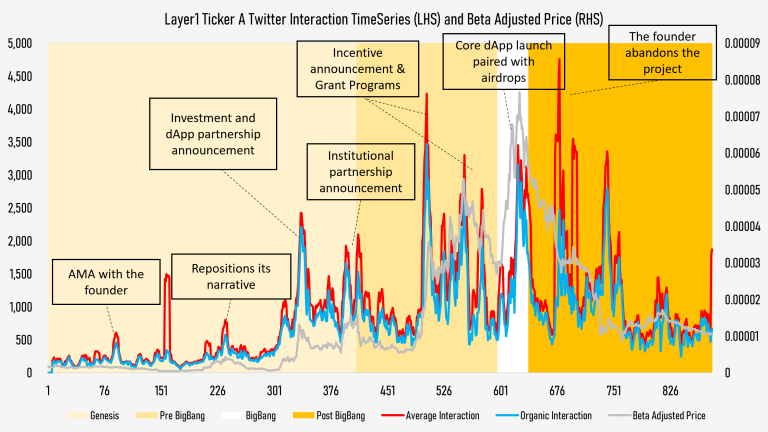
Figure 17 – A Time Series Interaction Data for Layer1 Ticker A
We had three examples on two types of mismanagement of community marketing so far, but we also have an unlucky contender here, a project that had positioned itself correctly in the niche market as a poor man’s DeFi chain, had properly carried out the marketing strategies, and actually succeeded in achieving the Big Bang with the launch of a signature vote-lock NFT DEX design copied by many, but immediately dethroned due to a force majeure accident of a core developer retiring right after the Big Bang event.
Yet, its strong narrative as an emergent DeFi hub, its legitimacy based on the core developer/co-founder who was known for his imposing presence in the DeFi sector, and using airdrop as a launching mechanism were all honorable conducts.
6. Key Takeaways and Concluding Remarks
We have been discussing in-depth about how to market your product step by step, and about how to spin up hypes on your project. However, it would not be redundant to once again stress that the most important attribute in any phase of your project is the fundamentals. You built a great engine with your project, so we wanted to help a little with filling up the fuel: Community and hype.
A sequence of intra-phase action items is not of supreme importance, but a sequence of phases is a problem. Build your legitimacy first, and scale your community with airdrops. The effect of airdrops without community is very short-lived, regardless of the interactions being bot-triggered or shark-triggered.
This paper has been lengthy and wordy, but the gist is simple and straightforward: “Build your community before you do airdrops; don’t do airdrops to build your community.” All other methodology and tricks we introduced are secondary to that core idea. Airdrops are somewhat similar to L2 scaling solutions in a way that they are used for scalability. For a not congested L1, no need for an L2. No community, no need for an airdrop.
For those founders who are gently curious about what phase they are in, please contact us for a diagnosis on your community.
(End of this paper)
